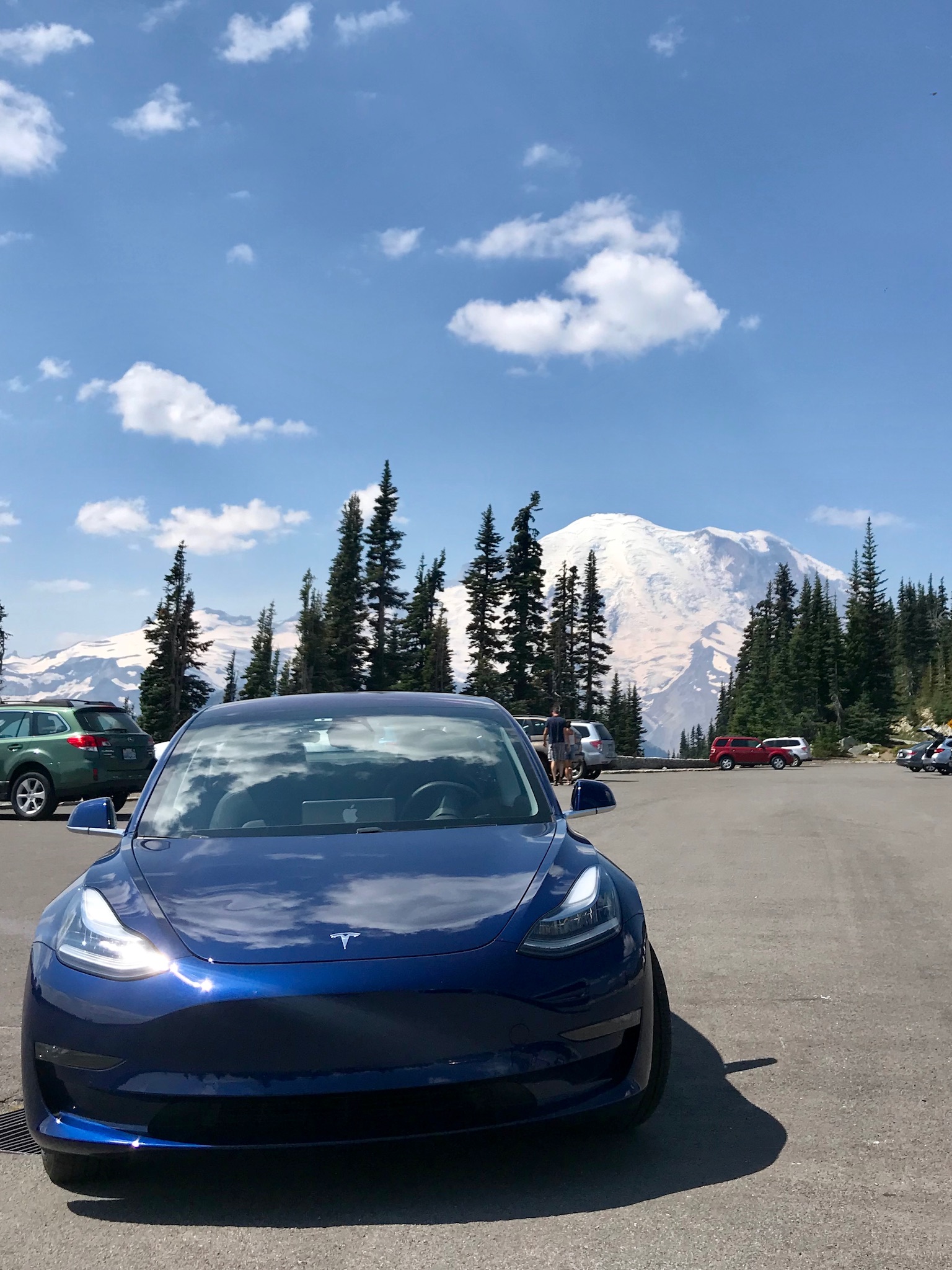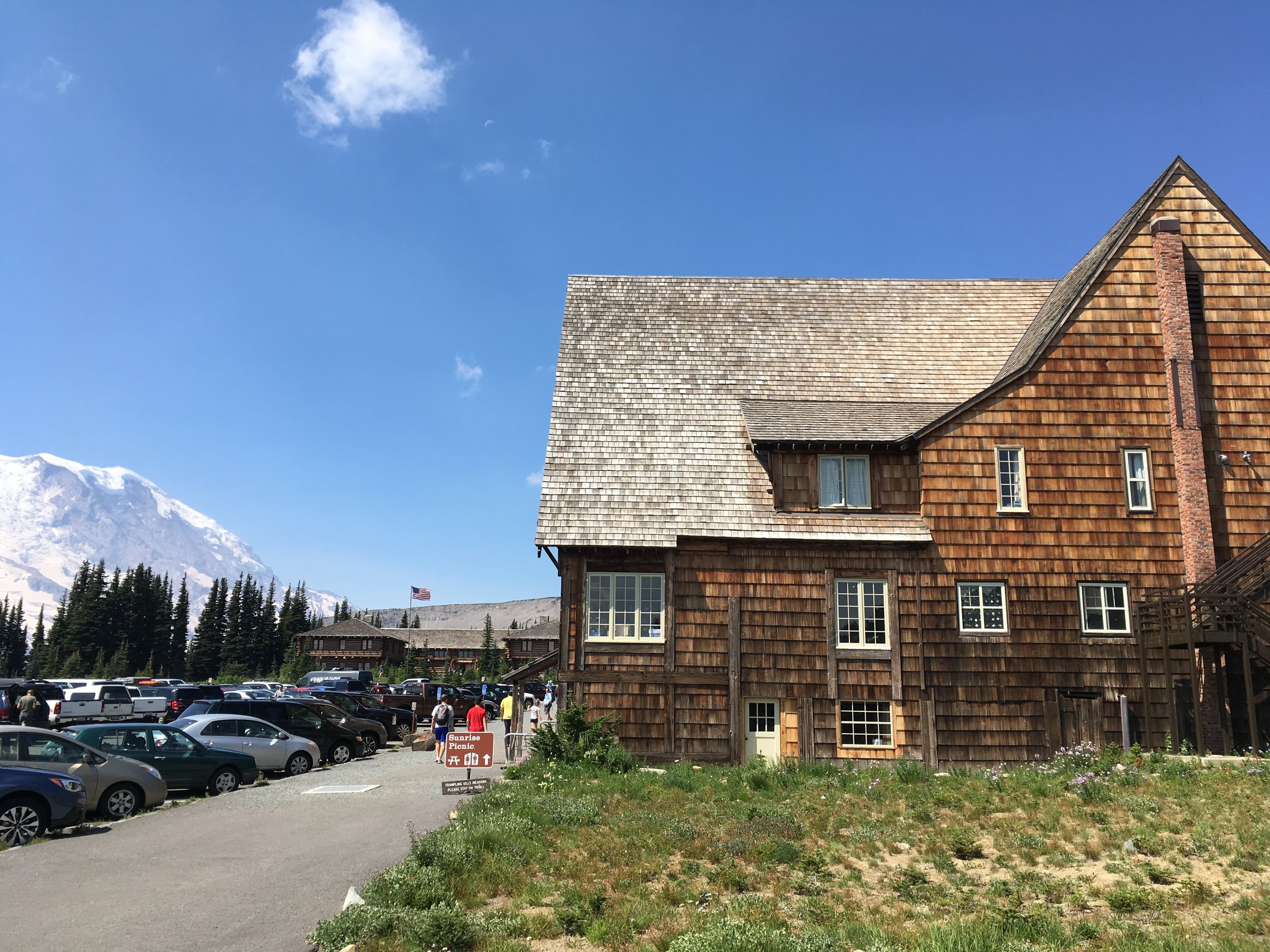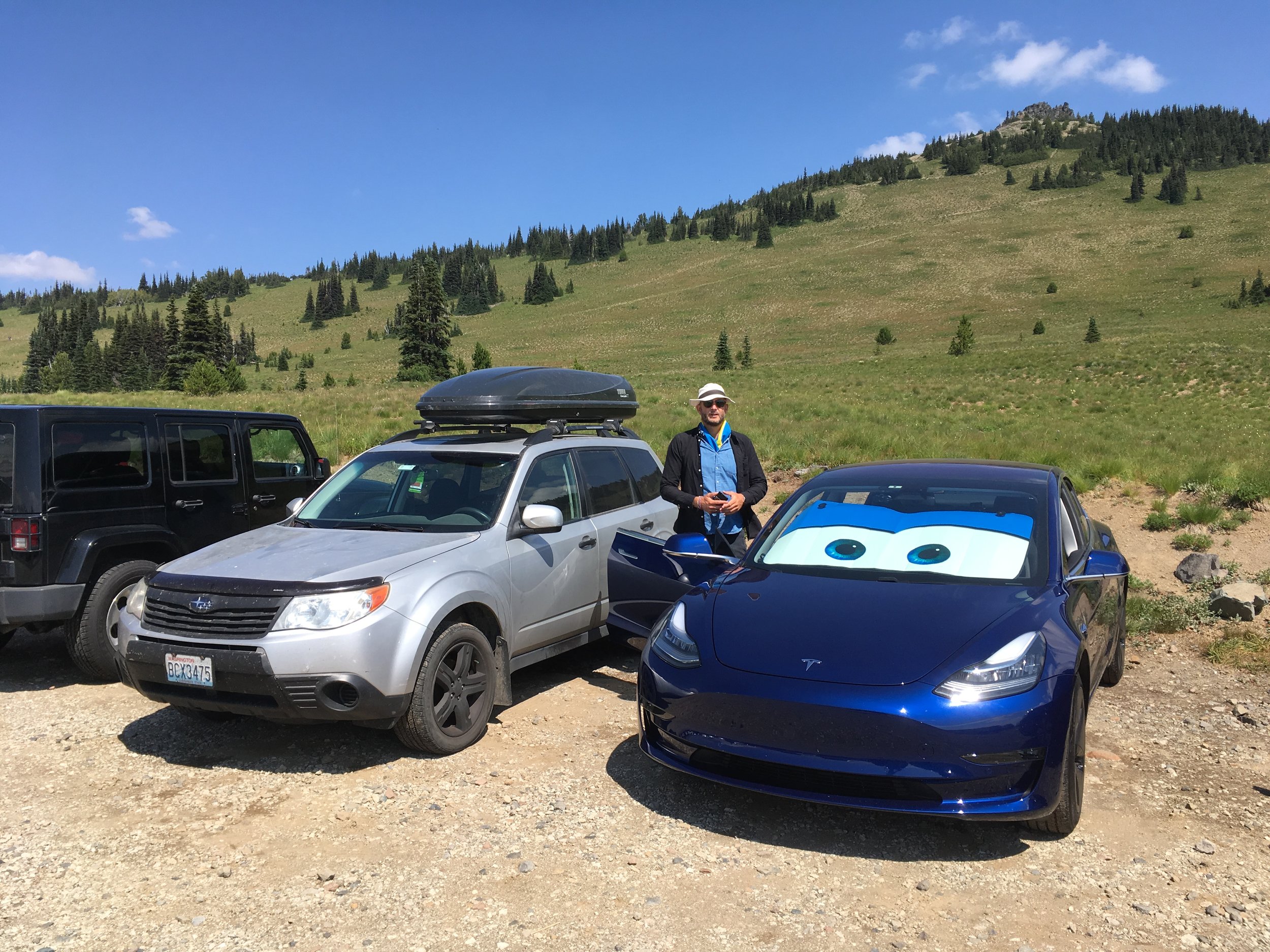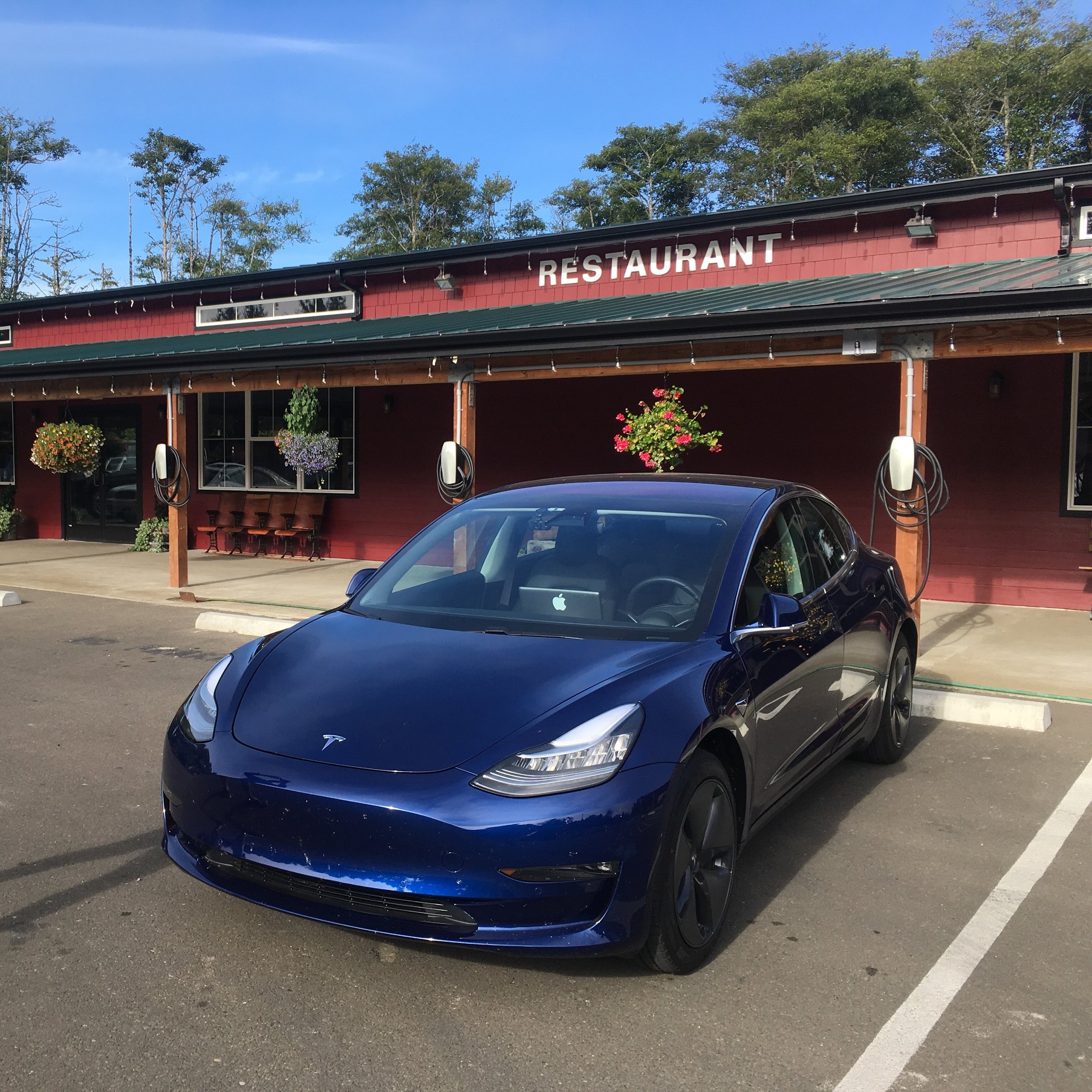After charging up at Centralia it would be no problem getting back to Seattle, so we declared the experiment a success at this point.
Road Trip Statistics
The stats for the full drive Seattle > White River Amphitheatre > Puyallup > Sunrise Visitor Center > Centralia ended up being 417 Km (259 mi), using 80% of the battery at a reported 133 Wh/Km (214 Wh/mi).
These reported consumption numbers look a little dubious to me. Assuming a battery capacity of 75 KWh the 80% utilization over 417 Km (259 mi) should be 144 Wh/Km (232 Wh/mi). I don't know how to account for this discrepancy unless losses while parked are excluded from the reported numbers. We did see 2% phantom drain during the hotel night, perhaps there was more drain during other stops along the way that I didn't notice.
Conclusions
I am frankly a little surprised at the reported efficiency figures we achieved during this trip. In my day to day driving I usually see reported consumption of 150 Wh/Km (240 Wh/mi). We did use air conditioning, but didn't speed or drive aggressively. I suppose the low speeds of the mountain roads helped avoid drag.
Something I hadn't considered before setting off was the lack of AT&T connectivity in the area. This lead to the car's navigation system being pretty unusable for the trip down the mountain until we found a spot with signal. Luckily I had brought a physical map. My brother's T-Mobile connection was superior to AT&T, so we could also use his phone as a navigation fallback.
Instead of heading straight for Seattle we decided to extend our road trip to the Pacific ocean, setting our sights on Westport where we were delighted to find the Cranberry Road Winery, which had a Tesla destination charger.










